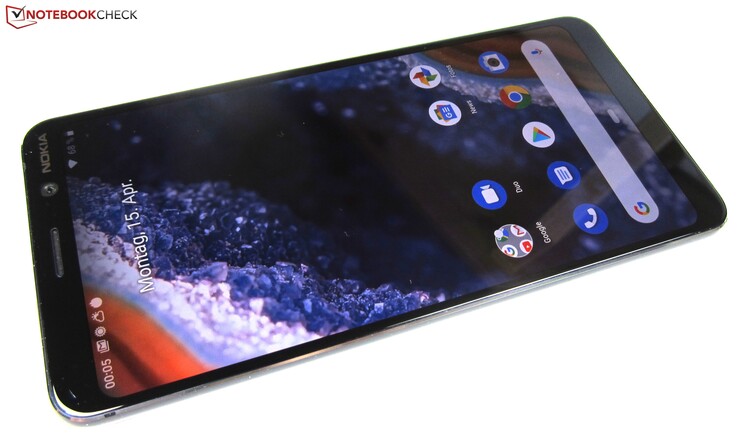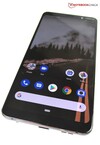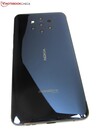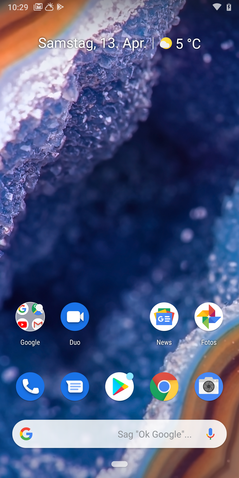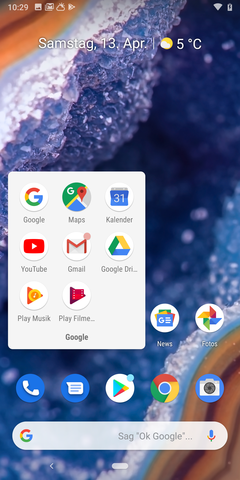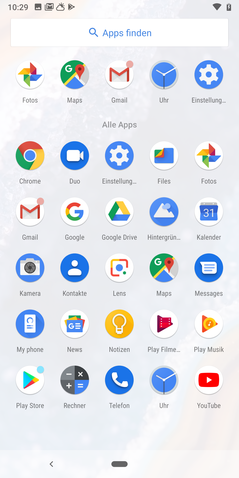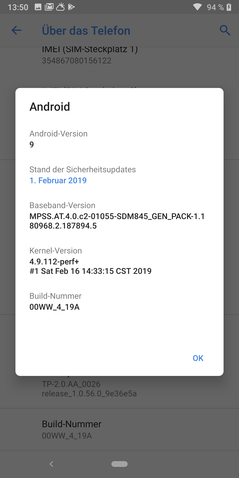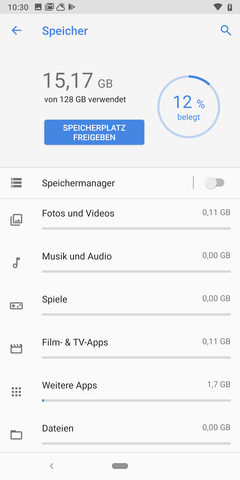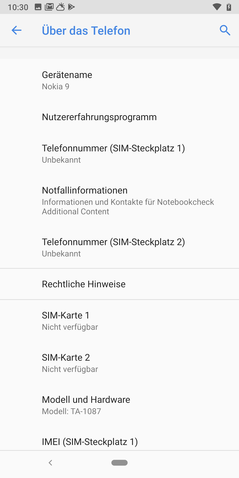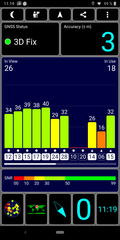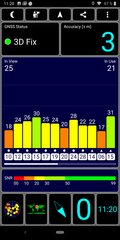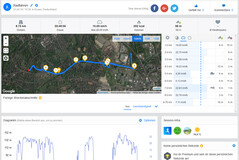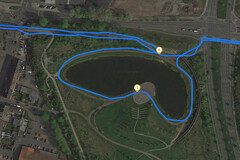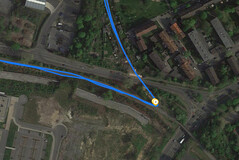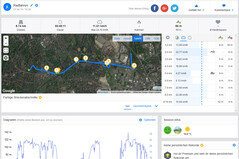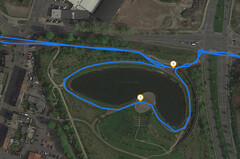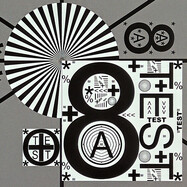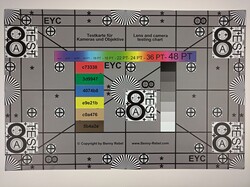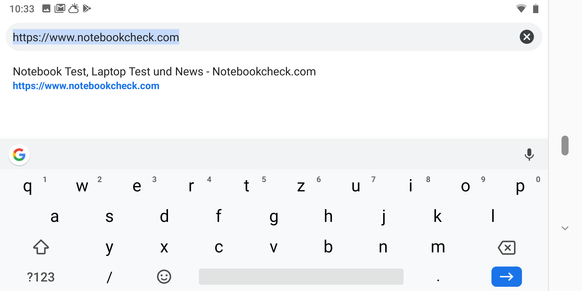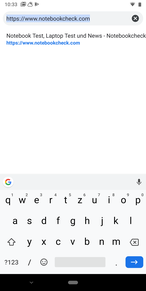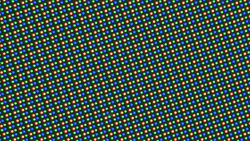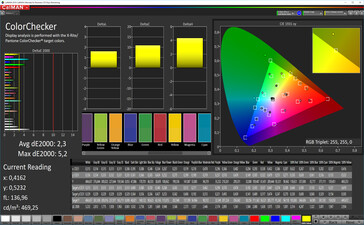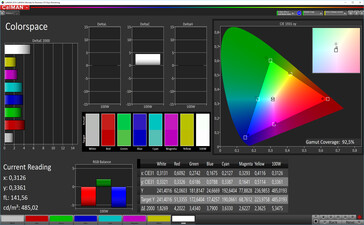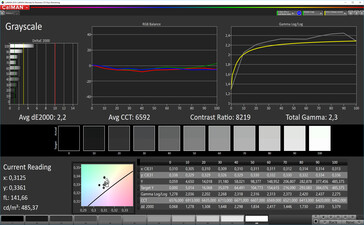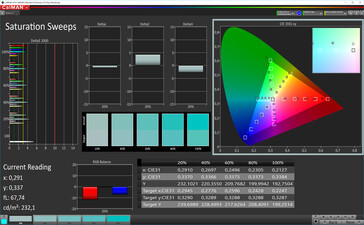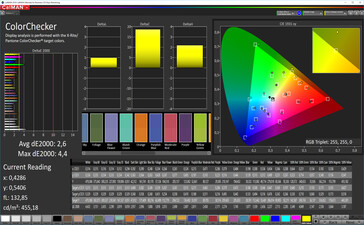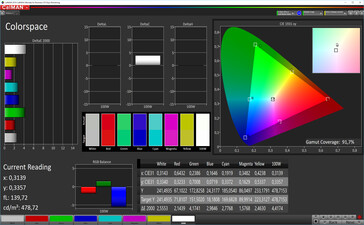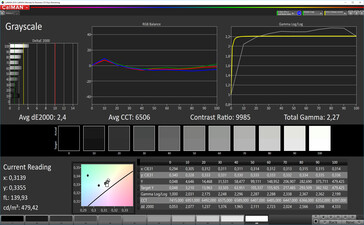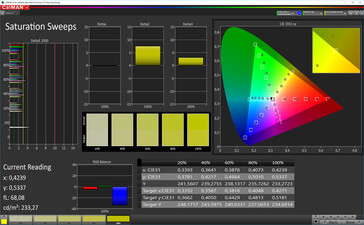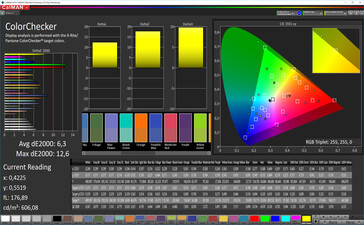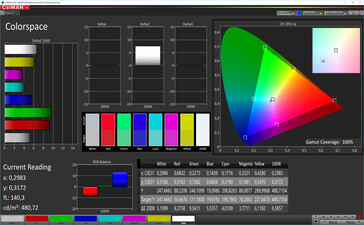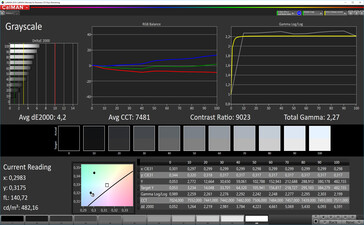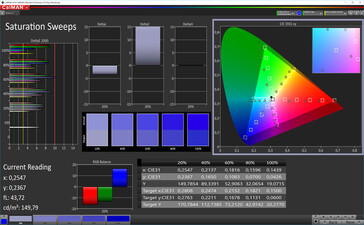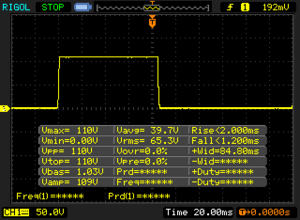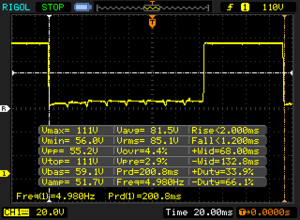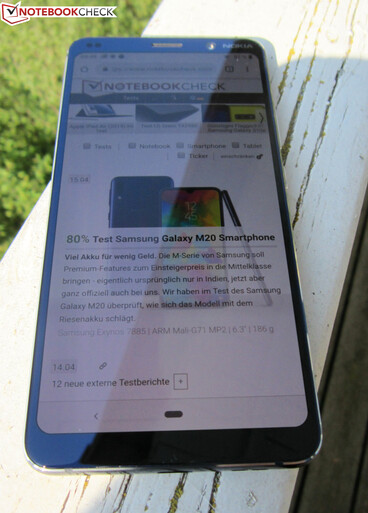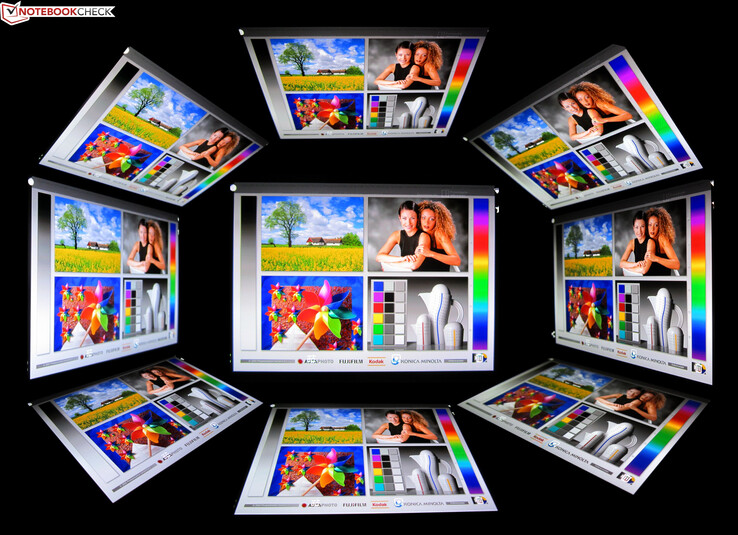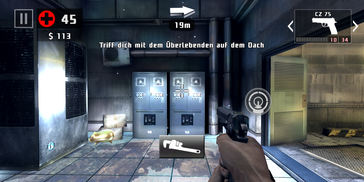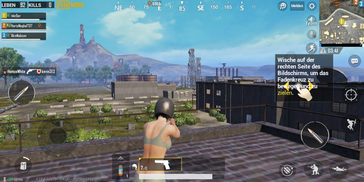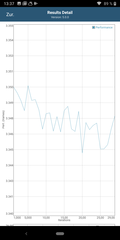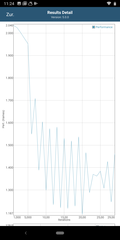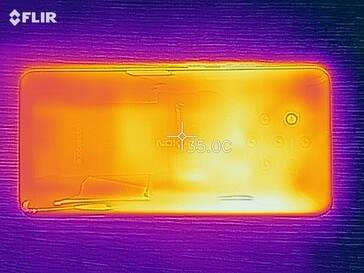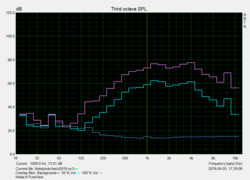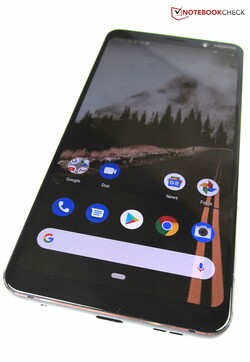Nokia 9 PureView Smartphone Review
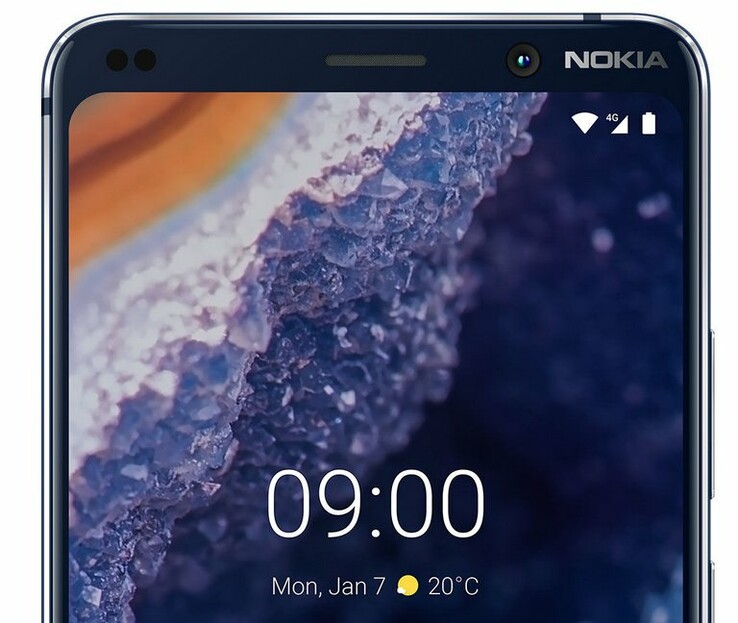
When designing their latest smartphone flagship HMD Global’s engineers went the whole nine yards and equipped the Nokia 9 PureView with not just two, nor just three, but a total of five camera modules with a resolution of 12 MP each at the back. The result is an attempt to revolutionize smartphone photography with exceptional dynamic range and unbelievable depth-of-field information.
The camera is so prominently advertised that it is easy to ignore the rest of the not any less impressive hardware. For around $700 you get a Snapdragon 845, which may not be Qualcomm’s latest and greatest high-end SoC but is still a remarkably fast contender, 6 GB of RAM, 128 GB of storage space, dual SIM, LTE Cat. 16, and an aluminum case shielded by Gorilla Glass 5.
Whether or not the Nokia 9 PureView is capable of living up to its own image quality expectations will be an important part of this review. We pitched it against its main competitors and other high-end smartphones, such as the Apple iPhone XS Max, Huawei P30 Pro, LG V40 ThinQ, Sony Xperia XZ3, and Xiaomi Mi 9.
Case
The smartphone’s design is conventional and lacks a notch. The only available color is “Midnight Blue”, and the 8 mm thin case is made of machined aluminum protected by Gorilla Glass 5 on both sides. This not only renders the 172 g heavy Nokia device very sturdy and robust, but it also ensures its IP67 certification according to which it can be submerged in 1 m (3 ft) of water for up to 30 minutes without taking a hit.
The front design is reserved and even somewhat conservative, although the thin silver aluminum frame surrounding the smartphone is definitely nice to look at as it offers a very pleasant contrast to the otherwise dark chassis. We can find the same design element on the back side, which features a glossy slightly beveled surface that looks very classy and premium.
The downside of its protective Gorilla Glass 5 layer is that it is susceptible to fingerprints and smudges, and it offers little to no grip (save for the aforementioned aluminum frame). A protective case would solve both these issues; however, at the time of writing Nokia did not have one on sale in its web shop.
The back side is dominated by the Nokia 9 PureView’s unique feature, its camera ensemble consisting of 5 Zeiss lenses with 12 MP each that do not protrude from the case but sit flush with the rear cover instead. Something that cannot be claimed for the LED flash, which protrudes ever so slightly but not enough to produce any wobble when placed face-up on a flat surface. The fingerprint reader is integrated into the display.
Connectivity
The Nokia 9 PureView is equipped with 6 GB of LPDDR4X RAM and 128 GB of UFS-2.1 storage memory. Out of the box, around 113 GB is user-accessible with the rest taken up by Android 9. Since the device lacks a microSD slot, storage space is not expandable. The device also features two nano SIM slots and supports DRM Widevine L1, as is expected of a flagship smartphone.
According to the specifications the USB-C port at the bottom supports USB-OTG and is connected via USB 3.1. Unfortunately, we failed to achieve transfer speeds even close to USB 3.1 when using the included USB cable. At just 42 MB/s they were just slightly faster than USB 2.0 would be capable of. A 3.5-mm headphone jack is missing from the device; however, HMD Global does include a USB-C dongle.
Software
The Nokia 9 PureView is an Android One smartphone, which means that it runs an unmodified vanilla version of Android 9 Pie without any bloatware or other preloaded software of questionable nature and usefulness. The only non-stock software is the camera app, which is provided by HMD Global instead of Google.
Android One smartphones get two years of timely operating system updates and three years of regular security updates. The latter are supposed to be released monthly according to Nokia; however, we cannot attest to that ambitious plan just yet as our review unit was running security patches as of February 2019 when we reviewed it in mid-April of 2019.
Communication and GPS
With NFC, Bluetooth 5.0, 802.11ac Wi-Fi, and LTE Cat. 16 the Nokia 9 PureView supports every standard expected of a high-end flagship smartphone in 2019. Thanks to its huge variety of supported frequencies it should work very well and connect to 4G networks world-wide.
The Wi-Fi modem supports both frequency bands, 2.4 and 5 GHz, and is thus capable of very high transfer rates. When connected to our Linksys EA8500 reference router we managed 523 Mb/s when transmitting and up to 638 Mb/s when receiving data. Accordingly, the Nokia 9 PureView is in good company with its similarly fast competitors. The minor fluctuations noticed during data transfers should not be an issue in day-to-day use.
| Networking | |
| iperf3 transmit AX12 | |
| Huawei P30 Pro | |
| Huawei P30 Pro | |
| Apple iPhone Xs Max | |
| LG V40 ThinQ | |
| Xiaomi Mi 9 | |
| Nokia 9 PureView | |
| Sony Xperia XZ3 | |
| iperf3 receive AX12 | |
| Huawei P30 Pro | |
| Huawei P30 Pro | |
| Xiaomi Mi 9 | |
| LG V40 ThinQ | |
| Nokia 9 PureView | |
| Sony Xperia XZ3 | |
| Apple iPhone Xs Max | |
Supported location services include GPS, GLONASS, Galileo, and BeiDou. It was able to obtain GPS lock both indoors and outdoors at an accuracy of just 3 m.
Our real-world experience was similar. On our usual 9-km long bike tour the Nokia 9 PureView turned out to be almost as accurate as the professional Garmin Edge 500 satnav.
Telephony and Call Quality
Given its Android One nature the Nokia 9 PureView uses Google’s default telephone app offering quick access to favorites, recents, and contacts. Call quality was decent, and both conversational partners had absolutely no trouble understanding each other very clearly even in noisier environments. We also failed to notice any static or other background noise during phone calls. That being said, voices were on the tinny side on both earphone and speakerphone.
Cameras
One phone with five cameras working simultaneously to create the perfect photo, at least according to Nokia. A total of five 12 MP cameras are located at the back, each one of which features a Zeiss lens and an aperture of f/1.82. This means in return that there is neither an optical zoom nor a wide angle lens.
Image quality is the one feature supposed to benefit the most from the armada of five sensors, three of which are monochrome for improved dynamic range. The remaining two are RGB sensors used to collect color information. When releasing the shutter button all five cameras snap a photo simultaneously, and the software applies various settings automatically. Once applied, all five photos are combined into a single 12 MP large HDR photo. Videos are recorded in 4K at 30 FPS. The front-facing camera offers the same video resolution and features a single conventional 20 MP sensor.
The combination of five separate cameras has some additional benefits for professional photographers. For example, the Nokia is capable of capturing and saving RAW files (DNG) instead of JPEGs, which can be then retroactively developed on the phone itself or on a PC. In addition, it captures up to 1,200 levels of depth, which not only allows for astonishing bokeh effects but also enables you to change a photo’s focus retroactively in Google Photos.
Unfortunately, we cannot attest to Nokia’s claims and promises of superb image quality. Photos taken in daylight turned out pretty well (scene 1 and 2), albeit they seemed somewhat synthetic and fake due to the high dynamic range associated with the HDR mode that cannot be disabled. In scene 1 the Nokia 9 PureView had trouble capturing fine details in particular. Many of its competitors, such as the Samsung Galaxy S10 Plus, did a much better job in this regard and also excelled in night time photography. This is a category in which the Nokia 9 PureView failed miserably, as can be seen in scene 3. The device successfully prevented noise at the cost of details resulting in a mushy and blurred image.
Another drawback was the camera app itself. While it offered a wide variety of settings and presets, it turned out to be comparatively slow and unresponsive for a smartphone. Expect delays of several seconds when switching between the various presets or when saving a photo. After all, the software needs to apply its filters and combine five separate photos into one. Thus, it can take a while for a photo to appear in the Google Photos app.
As with all smartphones we also took a closer look at the camera under normalized conditions. Using the X-Rite ColorChecker and our test chart we attempt to determine color accuracy and focus, respectively.
As can be seen on the image below, colors were captured too bright while grays were fairly accurate. Our test chart was crisp and uniform up to the edges, although we did notice some minor noise as well as a bit of blurriness and inaccuracies around the outlines of fine details.
Accessories and Warranty
Included in the box are a modular 18 W charger (5 V/3 A, 9 V/2 A, 12 V/1.5 A), a USB cable (Type-C to Type-A), a SIM tool, a USB-C to 3.5-mm headphone jack adapter, a headset, a quick-start guide, and the usual stack of product and safety information. Nokia does not sell any model-specific accessories for this particular smartphone.
While European customers get a full 24-month warranty on the phone and its non-replaceable battery US customers are limited to just 12 months for the device and the battery. The included accessories, like cable, headset, and charger, are covered for no more than six months.
Input Devices and Handling
Thanks to its protective Gorilla Glass 5 shield the Nokia 9 PureView’s 10-point capacitive touchscreen is very smooth, fast, and precise. The default keyboard app, Google’s Gboard, can be easily replaced with any other keyboard app from the Play Store.
The fingerprint reader is integrated into the display. It is used for unlocking the phone as well as authorizing purchases in the Play Store or in-app purchases from within apps themselves. It required more force to detect our fingers than regular fingerprint readers, and we have had to retry authorization repeatedly more often than expected, which became quite bothersome after a while.
Other means of authorization include a PIN, a pattern, or 2D face detection. The latter worked adequately fast; however, it required sufficient ambient light due to its lack of infrared sensors.
Display
The HDR10-capable P-OLED 2:1 display measured 5.99 inches and ran at a native resolution of 2880x1440, resulting in a high pixel density of 538 PPI. The display was very sharp and crisp, and we were unable to distinguish individual pixels with the naked eye.
Maximum brightness was measured at 641 nits on average (675 nits maximum) with enabled ambient light sensor, and brightness distribution was a decent 92%. In the APL50 test with equally distributed black and white backgrounds maximum brightness was even higher, and it was measured at 1,097 nits. By disabling the ambient light sensor maximum brightness is limited to just 482 nits.
On the other side of the brightness spectrum the display could be dimmed to just 2.2 nits, which was perfect for our eyes in the dark. In addition, a so called “night light” feature that tints the display slightly yellow for improved readability can be enabled in the display settings. Given that it is based on OLED technology the display can completely shut off individual pixels. As a consequence, the resulting contrast ratio is mathematically infinite.
One of the drawbacks of OLED technology is the requirement for PWM for brightness regulation. Given its comparatively flat amplitude we don’t expect it to be a problem for most users. Those more sensitive to PWM flickering might suffer from the usual consequences, though.
| |||||||||||||||||||||||||
Brightness Distribution: 92 %
Center on Battery: 648 cd/m²
Contrast: ∞:1 (Black: 0 cd/m²)
ΔE ColorChecker Calman: 2.3 | ∀{0.5-29.43 Ø4.78}
ΔE Greyscale Calman: 2.2 | ∀{0.09-98 Ø5}
92.5% sRGB (Calman 2D)
Gamma: 2.3
CCT: 6592 K
| Nokia 9 PureView P-OLED, 2880x1440, 6" | Apple iPhone Xs Max OLED, 2688x1242, 6.5" | Huawei P30 Pro OLED, 2340x1080, 6.5" | LG V40 ThinQ OLED, 3120x1440, 6.4" | Sony Xperia XZ3 OLED, 2880x1440, 6" | Xiaomi Mi 9 AMOLED, 2340x1080, 6.4" | |
|---|---|---|---|---|---|---|
| Screen | 16% | 8% | -6% | -74% | 24% | |
| Brightness middle (cd/m²) | 648 | 656 1% | 597 -8% | 567 -12% | 543 -16% | 593 -8% |
| Brightness (cd/m²) | 641 | 659 3% | 608 -5% | 559 -13% | 542 -15% | 587 -8% |
| Brightness Distribution (%) | 92 | 88 -4% | 89 -3% | 89 -3% | 92 0% | 94 2% |
| Black Level * (cd/m²) | ||||||
| Colorchecker dE 2000 * | 2.3 | 1.7 26% | 2.2 4% | 3.3 -43% | 6.6 -187% | 0.9 61% |
| Colorchecker dE 2000 max. * | 5.2 | 2.8 46% | 3.6 31% | 6.1 -17% | 11 -112% | 2 62% |
| Greyscale dE 2000 * | 2.2 | 1.7 23% | 1.6 27% | 1.1 50% | 4.7 -114% | 1.5 32% |
| Gamma | 2.3 96% | 1.998 110% | 2.23 99% | 2.46 89% | 1.835 120% | 2.27 97% |
| CCT | 6592 99% | 6487 100% | 6268 104% | 6495 100% | 6817 95% | 6548 99% |
* ... smaller is better
Screen Flickering / PWM (Pulse-Width Modulation)
| Screen flickering / PWM detected | 235.8 Hz | ||
The display backlight flickers at 235.8 Hz (worst case, e.g., utilizing PWM) . The frequency of 235.8 Hz is relatively low, so sensitive users will likely notice flickering and experience eyestrain at the stated brightness setting and below. In comparison: 53 % of all tested devices do not use PWM to dim the display. If PWM was detected, an average of 8111 (minimum: 5 - maximum: 343500) Hz was measured. | |||
The Nokia 9 PureView supports a feature called “PureDisplay” for improved color accuracy. The settings can be found in a menu with the same name. By default, the “Dynamic” setting is selected and color, contrast ratio, and brightness are dynamically adjusted based on the screen content. The other three presets include “Basic”, “Cinema”, and “Vibrant”, and we took a closer look at each one of them using our X-Rite i1 Pro 2 spectrophotometer and the CalMAN software.
Should you be interested in a natural and accurate representation of colors your presets of choice are “Basic” and “Cinema”, which were both measured at almost ideal DeltaE deviations of less than 3 for colors and grayscale and featured a nigh perfect color temperature setting. The “Vibrant” option switches to the DCI-P3 color space and sacrifices accuracy for popping colors and an increased amount of blue resulting in a slightly cooler representation of colors.
Display Response Times
| ↔ Response Time Black to White | ||
|---|---|---|
| 3.2 ms ... rise ↗ and fall ↘ combined | ↗ 2 ms rise | |
| ↘ 1.2 ms fall | ||
| The screen shows very fast response rates in our tests and should be very well suited for fast-paced gaming. In comparison, all tested devices range from 0.1 (minimum) to 240 (maximum) ms. » 13 % of all devices are better. This means that the measured response time is better than the average of all tested devices (20.2 ms). | ||
| ↔ Response Time 50% Grey to 80% Grey | ||
| 3.2 ms ... rise ↗ and fall ↘ combined | ↗ 2 ms rise | |
| ↘ 1.2 ms fall | ||
| The screen shows very fast response rates in our tests and should be very well suited for fast-paced gaming. In comparison, all tested devices range from 0.165 (minimum) to 636 (maximum) ms. » 12 % of all devices are better. This means that the measured response time is better than the average of all tested devices (31.6 ms). | ||
Performance
The Nokia 9 PureView is equipped with the same Qualcomm Snapdragon 845 high-end SoC that some of its competitors, like the LG V40 ThinQ or the Sony Xperia XZ3, feature. The octa-core CPU is comprised of four high-performance ARM Cortex A75 cores running at up to 2.8 GHz and four power-saving ARM Cortex A55 cores running at up to 1.8 GHz.
As expected, our review unit was on a par with the LG V40 ThinQ and the Sony Xperia XZ3 in the synthetic benchmarks. In some benchmarks, like for example GFXBench, it was slightly faster than its identically equipped competitors. All three were outperformed by the Huawei P30 Pro, the Apple iPhone Xs Max, and the Xiaomi Mi 9.
| PCMark for Android | |
| Work performance score (sort by value) | |
| Nokia 9 PureView | |
| Huawei P30 Pro | |
| LG V40 ThinQ | |
| Sony Xperia XZ3 | |
| Xiaomi Mi 9 | |
| Average Qualcomm Snapdragon 845 (7998 - 13211, n=26) | |
| Work 2.0 performance score (sort by value) | |
| Nokia 9 PureView | |
| Huawei P30 Pro | |
| LG V40 ThinQ | |
| Sony Xperia XZ3 | |
| Xiaomi Mi 9 | |
| Average Qualcomm Snapdragon 845 (7360 - 9868, n=27) | |
| AnTuTu v7 - Total Score (sort by value) | |
| Nokia 9 PureView | |
| Apple iPhone Xs Max | |
| Huawei P30 Pro | |
| LG V40 ThinQ | |
| Sony Xperia XZ3 | |
| Xiaomi Mi 9 | |
| Average Qualcomm Snapdragon 845 (246366 - 299878, n=27) | |
Even though the web-browsing benchmarks paint a different picture, web-browsing performance was superb. In these tests, both the LG and Sony managed to outperform the Nokia 9 PureView slightly. As expected the Apple iPhone Xs Max remained the king of the web-browsing hill.
| Jetstream 2 - 2.0 Total Score | |
| Average of class Smartphone (23.8 - 387, n=154, last 2 years) | |
| Huawei P30 Pro (Chrome 73) | |
| Xiaomi Mi 9 (Chrome 73) | |
| Nokia 9 PureView (Chrome 73.0.3683.90) | |
| Average Qualcomm Snapdragon 845 (22.7 - 48.9, n=4) | |
| LG V40 ThinQ (Firefox 67) | |
| Speedometer 2.0 - Result 2.0 | |
| Average of class Smartphone (15.2 - 643, n=128, last 2 years) | |
| Huawei P30 Pro (Chrome 73) | |
| Xiaomi Mi 9 (Chrome 73.0.3683.75) | |
| Average Qualcomm Snapdragon 845 (46.4 - 54.1, n=4) | |
| Nokia 9 PureView (Chrome 73.0.3683.90) | |
| LG V40 ThinQ (Chrome 71) | |
| WebXPRT 3 - Overall | |
| Average of class Smartphone (38 - 380, n=35, last 2 years) | |
| Apple iPhone Xs Max (Safari 12) | |
| Huawei P30 Pro (Chrome 73) | |
| Xiaomi Mi 9 (Chrome 73.0.3683.75) | |
| Sony Xperia XZ3 (Chrome 70) | |
| LG V40 ThinQ (Chrome 71) | |
| Average Qualcomm Snapdragon 845 (19 - 103, n=17) | |
| Nokia 9 PureView (Chrome 73.0.3683.90) | |
| Octane V2 - Total Score | |
| Average of class Smartphone (2228 - 121337, n=201, last 2 years) | |
| Apple iPhone Xs Max (Safari 12) | |
| Xiaomi Mi 9 (Chrome 73.0.3683.75) | |
| Huawei P30 Pro (Chrome 73) | |
| Sony Xperia XZ3 (Chrome 70) | |
| Nokia 9 PureView (Chrome 73.0.3683.90) | |
| LG V40 ThinQ (Chrome 71) | |
| Average Qualcomm Snapdragon 845 (3991 - 18275, n=28) | |
| Mozilla Kraken 1.1 - Total | |
| Average Qualcomm Snapdragon 845 (2154 - 11204, n=28) | |
| Nokia 9 PureView (Chrome 73.0.3683.90) | |
| LG V40 ThinQ (Chrome 71) | |
| Sony Xperia XZ3 (Chrome 70) | |
| Huawei P30 Pro (Chrome 73) | |
| Xiaomi Mi 9 (Chrome 73.0.3683.75) | |
| Average of class Smartphone (257 - 28190, n=156, last 2 years) | |
| Apple iPhone Xs Max (Safari 12) | |
* ... smaller is better
The device comes with fast UFS-2.1 memory. Unfortunately, it only turned out to be fast in sequential data transfers. Random access was somewhat slow. The Huawei P30 Pro and Xiaomi Mi 9 were significantly faster. A microSD card slot is not available.
| Nokia 9 PureView | Huawei P30 Pro | LG V40 ThinQ | Sony Xperia XZ3 | Xiaomi Mi 9 | Average 128 GB UFS 2.1 Flash | Average of class Smartphone | |
|---|---|---|---|---|---|---|---|
| AndroBench 3-5 | 191% | 3% | 1% | 204% | 154% | 677% | |
| Sequential Read 256KB (MB/s) | 728 | 849 17% | 690 -5% | 681 -6% | 666 -9% | 761 ? 5% | 2223 ? 205% |
| Sequential Write 256KB (MB/s) | 200.3 | 250.8 25% | 203.9 2% | 196.1 -2% | 388.3 94% | 296 ? 48% | 1838 ? 818% |
| Random Read 4KB (MB/s) | 132 | 174.4 32% | 130.1 -1% | 135.7 3% | 149.4 13% | 154 ? 17% | 295 ? 123% |
| Random Write 4KB (MB/s) | 20.18 | 159.2 689% | 23.36 16% | 22.22 10% | 165.3 719% | 130.4 ? 546% | 335 ? 1560% |
| Sequential Read 256KB SDCard (MB/s) | 82.6 ? | 84.9 ? | 34.2 ? | 76 ? | |||
| Sequential Write 256KB SDCard (MB/s) | 68.2 ? | 63.1 ? | 30.4 ? | 59.6 ? |
Gaming
Thanks to its Adreno 630 GPU, one of the fastest currently available smartphone GPUs, the Nokia 9 PureView had no trouble running the latest Android games smoothly. As our Gamebench results proved, it was capable of achieving maximum frame rates even at maximum settings, for example a constant 30 FPS in PUBG Mobile and 60 FPS in Dead Trigger 2. The gyroscope and touchscreen worked flawlessly.
The single downward-facing speaker was only capable of producing mono sound; however, this turned out to be perfectly fine in our tests. By holding the device in landscape mode in both hands the sound waves are reflected by the palms of your hands, and therefore seem to be originating on both sides of the device.
Dead Trigger 2
PUBG Mobile
Emissions
Temperature
Surface temperatures remained fairly low, and the Nokia 9 PureView remained lukewarm at worst. Even after a full hour of maximum load its surface temperatures never exceeded 33.8 °C. However, as running the GFXBench battery test showed, the CPU tends to performance throttle depending on temperature.
Throttling started after just five out of 30 iterations in the more demanding Manhattan scenario, and dropped by around 30% around the 10th run. The less intensive T-Rex scenario showed no throttling at all.
(+) The maximum temperature on the upper side is 32.8 °C / 91 F, compared to the average of 35.2 °C / 95 F, ranging from 21.9 to 247 °C for the class Smartphone.
(+) The bottom heats up to a maximum of 33.8 °C / 93 F, compared to the average of 34 °C / 93 F
(+) In idle usage, the average temperature for the upper side is 27.6 °C / 82 F, compared to the device average of 32.9 °C / 91 F.
Speakers
The Nokia 9 PureView’s single speaker is located on the right-hand side of the USB-C port and can get surprisingly loud (up to 85.7 dB(A)). Unfortunately, it tends to overemphasize mids and highs and therefore sounds rather tinny. This is an effect that gets worse with increased volume levels. That being said, it is still decent enough for videos, music, gaming, and voices.
To improve your audio experience you can use either wireless Bluetooth 5.0 aptX speakers/headphones or wired ones via the included USB-C adapter.
Nokia 9 PureView audio analysis
(+) | speakers can play relatively loud (85.7 dB)
Bass 100 - 315 Hz
(-) | nearly no bass - on average 25% lower than median
(±) | linearity of bass is average (10.4% delta to prev. frequency)
Mids 400 - 2000 Hz
(±) | higher mids - on average 5.1% higher than median
(+) | mids are linear (5.9% delta to prev. frequency)
Highs 2 - 16 kHz
(±) | higher highs - on average 5.5% higher than median
(+) | highs are linear (5.8% delta to prev. frequency)
Overall 100 - 16.000 Hz
(±) | linearity of overall sound is average (20.2% difference to median)
Compared to same class
» 33% of all tested devices in this class were better, 9% similar, 58% worse
» The best had a delta of 11%, average was 35%, worst was 134%
Compared to all devices tested
» 51% of all tested devices were better, 8% similar, 40% worse
» The best had a delta of 4%, average was 24%, worst was 134%
Huawei P30 Pro audio analysis
(+) | speakers can play relatively loud (87.5 dB)
Bass 100 - 315 Hz
(-) | nearly no bass - on average 27.2% lower than median
(±) | linearity of bass is average (11.9% delta to prev. frequency)
Mids 400 - 2000 Hz
(+) | balanced mids - only 2.5% away from median
(+) | mids are linear (2.2% delta to prev. frequency)
Highs 2 - 16 kHz
(+) | balanced highs - only 4.4% away from median
(+) | highs are linear (3.7% delta to prev. frequency)
Overall 100 - 16.000 Hz
(±) | linearity of overall sound is average (16.9% difference to median)
Compared to same class
» 9% of all tested devices in this class were better, 7% similar, 84% worse
» The best had a delta of 11%, average was 35%, worst was 134%
Compared to all devices tested
» 29% of all tested devices were better, 8% similar, 63% worse
» The best had a delta of 4%, average was 24%, worst was 134%
Battery Life
Power Consumption
Compared to its high-end competitors the Nokia 9 PureView showed an increased average power consumption of 23% and 10% higher power consumption than other SD845-equipped smartphones. Therefore, we do not expect particularly great battery life from this device.
| Off / Standby | |
| Idle | |
| Load |
|
Key:
min: | |
| Nokia 9 PureView 3320 mAh | Apple iPhone Xs Max 3174 mAh | Huawei P30 Pro 4200 mAh | LG V40 ThinQ 3300 mAh | Sony Xperia XZ3 3300 mAh | Xiaomi Mi 9 3300 mAh | Average Qualcomm Snapdragon 845 | Average of class Smartphone | |
|---|---|---|---|---|---|---|---|---|
| Power Consumption | 23% | 11% | 24% | 30% | 27% | 10% | 1% | |
| Idle Minimum * (Watt) | 1.65 | 1 39% | 0.68 59% | 0.87 47% | 0.8 52% | 0.67 59% | 0.862 ? 48% | 0.848 ? 49% |
| Idle Average * (Watt) | 2.34 | 1.4 40% | 2.6 -11% | 1.39 41% | 1.2 49% | 1.26 46% | 1.728 ? 26% | 1.434 ? 39% |
| Idle Maximum * (Watt) | 2.43 | 1.7 30% | 2.77 -14% | 1.41 42% | 1.5 38% | 1.29 47% | 2.07 ? 15% | 1.618 ? 33% |
| Load Average * (Watt) | 5.02 | 4.6 8% | 3.74 25% | 3.96 21% | 4.8 4% | 3.71 26% | 4.87 ? 3% | 7.01 ? -40% |
| Load Maximum * (Watt) | 6.51 | 6.7 -3% | 6.82 -5% | 8.6 -32% | 6.2 5% | 9.3 -43% | 9.27 ? -42% | 11.3 ? -74% |
* ... smaller is better
Battery Life
As expected battery life was somewhat of a disappointment, and the Nokia 9 PureView managed to drain its 3,320 mAh large battery comparatively fast in all battery tests. It performed particularly poor in the Wi-Fi test and ran out of power after just 8:06 hours. Thanks to its poor test results the device almost landed in last place of its comparison group; however, it was outpaced by the Sony Xperia XZ3 that had an even shorter battery life.
On a more positive note charging the device from near empty to full with the included 18 W charger only took around 2 hours, with the first 50% only taking around 30 minutes. Since it supports wireless charging all it requires is a Qi-compatible wireless charger.
| Nokia 9 PureView 3320 mAh | Apple iPhone Xs Max 3174 mAh | Huawei P30 Pro 4200 mAh | LG V40 ThinQ 3300 mAh | Sony Xperia XZ3 3300 mAh | Xiaomi Mi 9 3300 mAh | |
|---|---|---|---|---|---|---|
| Battery runtime | 19% | 66% | 11% | -14% | 19% | |
| Reader / Idle (h) | 20.8 | 21.8 5% | 32.8 58% | 19 -9% | 21.2 2% | 27.5 32% |
| H.264 (h) | 12.2 | 13.4 10% | 19.9 63% | 11 -10% | 7 -43% | 16.8 38% |
| WiFi v1.3 (h) | 8.1 | 12.4 53% | 14 73% | 8.5 5% | 7 -14% | 9.1 12% |
| Load (h) | 3.4 | 3.7 9% | 5.7 68% | 5.3 56% | 3.4 0% | 3.2 -6% |
Pros
Cons
Verdict
What started out as an ambitious idea ended up in a disappointment. The Nokia 9 PureView’s quintuple camera is certainly not anything special or even particularly good. Its camera app is slow and unresponsive, which further belittles the overall impression of this smartphone camera.
We can only hope that HMD Global will improve upon both of these with a software update. It is a shame, really, because the innovative idea of combining three monochrome images with two RGB photos has a lot of potential. The astonishing bokeh capabilities are living proof thereof.
The Nokia 9 PureView does not take full advantage of its innovative quintuple camera design. As a result, it is definitely not among the best smartphone cameras available.
If camera quality is of utmost importance to you then you will have to look elsewhere. Xiaomi’s Mi 9 flagship comes to mind, which also happens to be quite a bit cheaper to boot.
Overall the Nokia 9 PureView still managed to leave a decent impression. Its high-quality IP67-certified aluminum case is worthy of a flagship phone, and thanks to Android One feature and security updates are guaranteed for the coming years. In addition, its LTE Cat. 16 modem offers fast cellular communication speeds, it features a good and accurate GPS modem, a very bright OLED display, and it offers a very high overall system performance.
Nevertheless, the list of drawbacks is simply too long for a flagship smartphone. While the missing 3.5-mm headphone jack can be dealt with thanks to the included USB-C adapter, other problems such as the pigheaded fingerprint reader that occasionally failed to detect our fingers completely or the comparatively short battery life are much harder to swallow.
Nokia 9 PureView
- 04/18/2019 v6 (old)
Manuel Masiero




